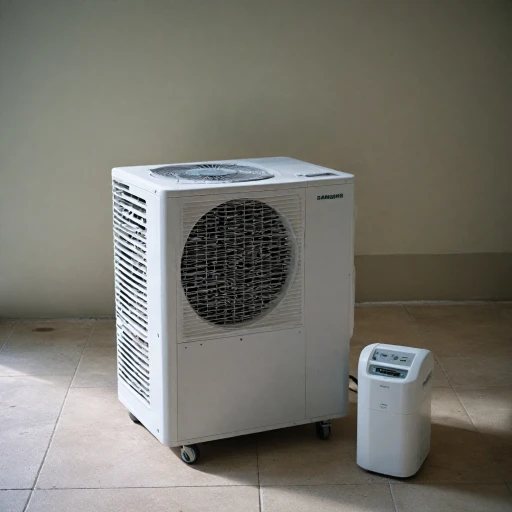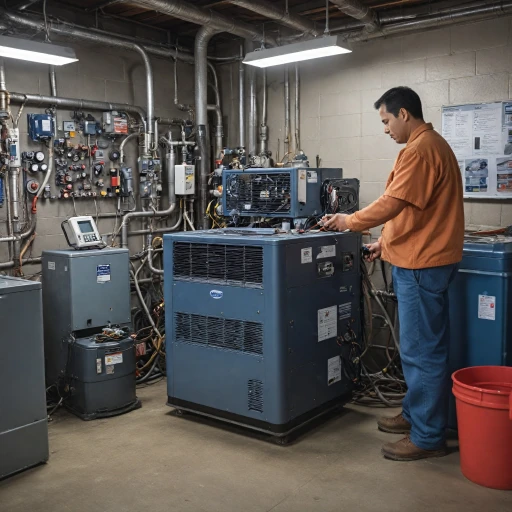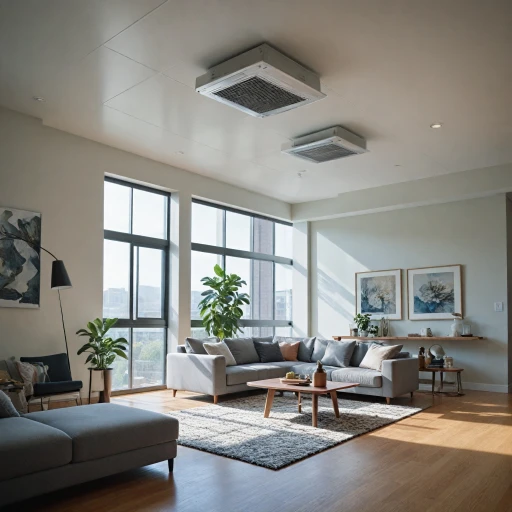
The Basics of Portable Air Conditioners
Introduction to Portable Air Conditioners
Portable air conditioners are versatile and convenient solutions for cooling individual rooms without the need for permanent installation. These units, available in various shapes and sizes, provide an effective way to maintain a comfortable temperature indoors during warm weather conditions. With an array of options such as single hose and dual hose systems, choosing the right one can significantly improve your air conditioning experience.How Portable Air Conditioners Function
Understanding how these cooling devices work is crucial in optimizing their use. Portable units generally include the following components:- Compressor: This is where the cooling process starts, compressing the refrigerant and propelling it through the system.
- Condenser Coils: These coils release the absorbed heat, often necessitating proper ventilation.
- Evaporator Coils: The refrigerant evaporates here, cooling the air.
- Exhaust Hose: Essential for venting warm air out of the room, which can be through a window or wall vent.
Configuration Options
Several configurations are available to match different cooling needs:- Single Hose Units: These draw air from the room and expel warm air through a single hose.
- Dual Hose Units: More energy efficient as they use one hose to intake air from outside and another to vent air out, reducing the amount of warm air drawn from the room itself.
- Mini Split Systems: Although a bit more complex, these offer a permanent solution with greater efficiency compared to traditional portable ACS.
How Cooling is Achieved
The Process Behind Effective Cooling
To understand how portable air conditioners manage to lower temperatures effectively, it's essential to delve into the mechanics of cooling. A portable air conditioning unit typically works by drawing in the warm air from your room, cooling it down, and then releasing the cool air back into the space. During this process, the portable unit also expels hot air out, usually through a window using an exhaust hose.
Most portable air conditioners use something called a refrigeration cycle to achieve cooling. This involves a refrigerant—a chemical compound that changes from liquid to gas and back again—circulating within the system. When the refrigerant evaporates inside the evaporator coil, it absorbs heat from the air in the room, creating cool air. As it moves on to the condenser coil, it releases the absorbed heat, which is then vented out of the space.
For more effective cooling, some portable ACs remove moisture from the air. This not only makes the space cooler but also less humid, providing additional comfort. The moisture extracted is usually collected in a water tank that you may need to empty periodically, although some models come with an auto-evaporation system eliminating this task.
It's also worth noting the types of hoses in portable air conditioning units. Single hose systems use one tube for expelling warm air, which can create a negative pressure situation, drawing in warm air from adjacent spaces. Dual hose systems, however, use one hose to expel hot air and another to draw fresh air from outside, resulting in more efficient cooling.
By understanding this process, you’ll be better equipped to select a unit that not only provides the best cooling performance but also enhances energy efficiency in your living space.
Ventilation and Exhaust Systems
Optimizing Exhaust Systems for Efficiency
When it comes to operating portable air conditioners efficiently, the ventilation and exhaust system installation plays a crucial role. Most portable AC units use either a single hose or a dual hose system to expel warm air and bring in cooler outdoor air. Both configurations have their own set of advantages and considerations.- Single Hose Systems: These portable units draw warm air from the room, cool it, and then vent out the hot air through a single exhaust hose. While single hose systems might be more common due to their simplicity and lower cost, they can be less efficient than dual hose systems. As the unit pulls air from the room to cool, it can create negative pressure, causing the portable unit to work harder to maintain the desired temperature.
- Dual Hose Systems: In contrast, dual hose conditioners separate air intake and exhaust functions into two distinct hoses. One hose is responsible for drawing in the outdoor air, while the other expels the hot air. This configuration minimizes the negative pressure issue, makes the cooling process more efficient, and reduces the energy consumed by the unit.
Energy Efficiency and Power Consumption
Understanding Energy Consumption and Efficiency
When it comes to choosing a portable air conditioner, energy efficiency and power consumption are critical factors to consider. Portable units, whether they are single hose or dual hose models, vary in their efficiency levels and energy usage. It's important to familiarize yourself with what these terms mean and how they impact both your comfort and your electricity bill. Energy efficiency in portable air conditioners typically involves the unit's capability to cool your room effectively while minimizing electricity usage. Just as with other home appliances, higher efficiency models will consume less power over time, which translates to cost savings. Most portable units come with an Energy Efficiency Ratio (EER) rating, similar to window or mini split air conditioners. This rating helps buyers gauge the cooling output of the unit in relation to its power input, with higher numbers signifying better efficiency. For instance, a unit with an EER above 10 is generally considered efficient. Smart thermostats can further enhance energy saving, enabling your portable acs to work optimally without unnecessary power consumption. These devices allow for precise temperature control, ensuring the conditioner only works as hard as is necessary to maintain the desired air room temperature, thus saving energy. Water fill systems, found in some portable air conditioners, might also contribute to their energy efficiency. By leveraging evaporative cooling techniques, these systems can potentially reduce electricity consumption. Moreover, the CLS (Cooling Load Summary), often found in user manuals, can provide informative figures about energy consumption characteristics of these units. Understanding these ratings can go a long way in determining which model offers the best portable cooling solution for you, efficiently managing heat and producing cool air at an energy cost your budget can tolerate. Ultimately, when considering energy efficiency, it pays to do your research on the specific brand and model before purchasing, ensuring that your portable air conditioner doesn’t unnecessarily drive up your energy costs while keeping you cool and comfortable.Maintenance and Troubleshooting
Keeping Your Portable AC Running Smoothly
Maintaining a portable air conditioner is key to ensuring it functions efficiently and provides optimal cooling for your room. Regular care not only prolongs the life of the unit but also enhances its energy efficiency, a crucial factor covered earlier. Here's how you can maintain your portable AC effectively:- Cleaning the Filters: Dust and debris can accumulate on filters, reducing airflow and cooling capacity. Check and clean the filters every few weeks or as recommended by the manufacturer. Most filters are washable; a gentle rinse can often restore them to optimal condition.
- Managing Water Accumulation: Portable units often collect water as they dehumidify the air. Some models require you to manually drain this water, while others have an auto-evaporation feature. If your portable unit needs manual draining, ensure you monitor water levels and empty the reservoir regularly.
- Inspecting the Exhaust Hose: Just as ventilation impacts performance, keeping the exhaust hose free of kinks and obstructions is vital. Routinely inspect it to ensure hot air is expelled efficiently. For those with dual hose models, check both the intake and exhaust hoses for issues.
- Checking the Window Kit: Ensure that the window kit remains properly sealed and secured, preventing warm air from re-entering the room. This is especially crucial for single hose systems that rely heavily on effective ventilation for cooling performance.
- Regular Exterior Cleaning: Dust can settle on the exterior of the portable air conditioning unit. Wipe it down occasionally to keep it looking clean and ensure all air openings stay unobstructed.
- Troubleshooting Common Issues: If your portable AC isn't cooling properly, check the settings on your smart thermostat or ensure the room is adequately sealed. Additionally, verify that nothing is blocking the air or exhaust hoses.












